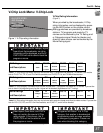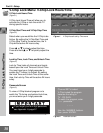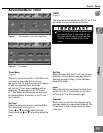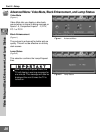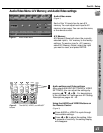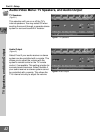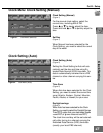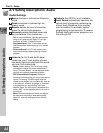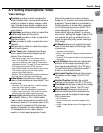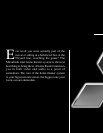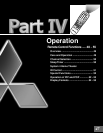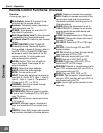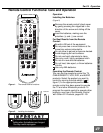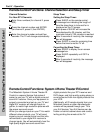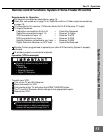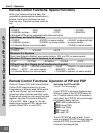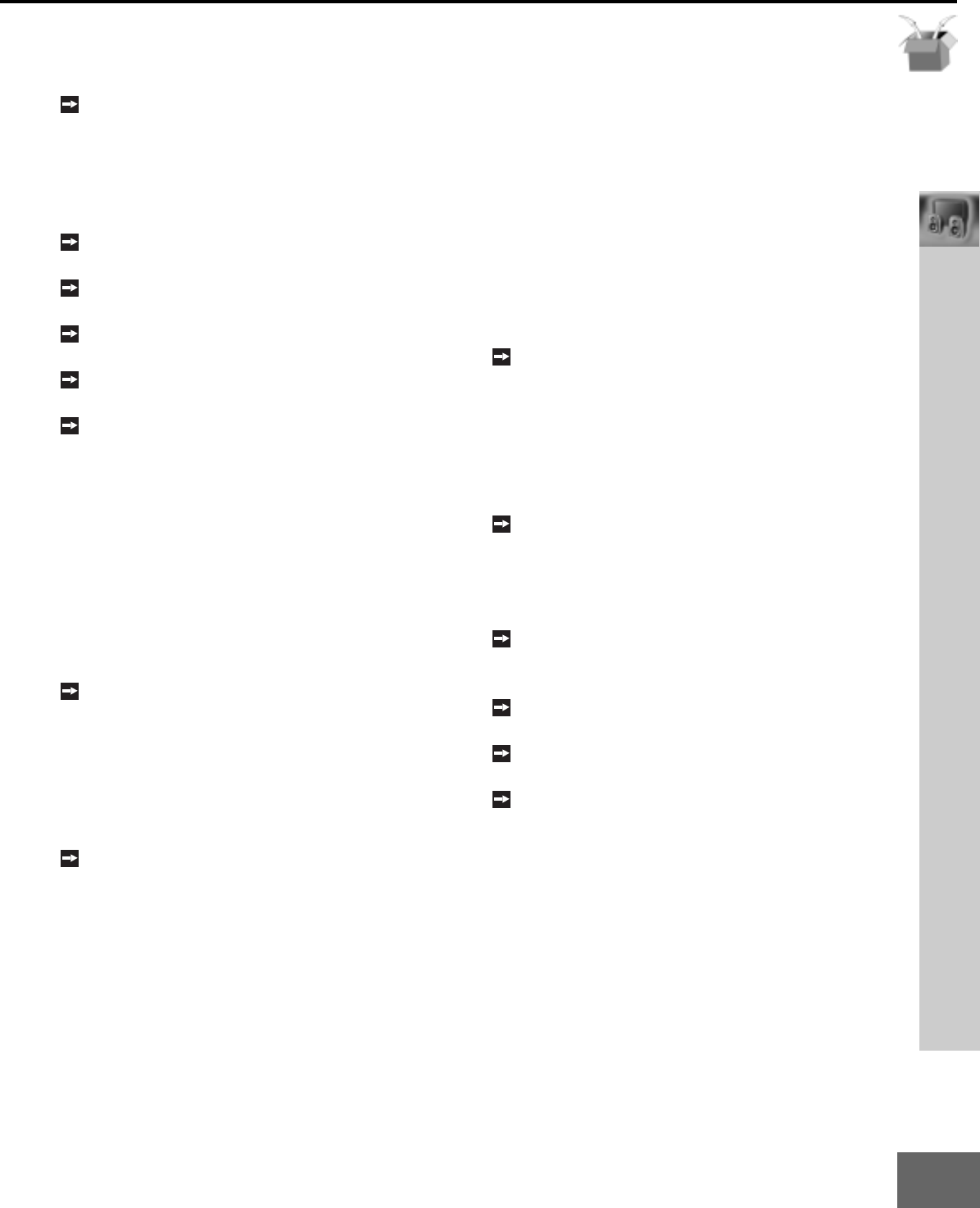
45
Part III : Setup
A/V Setting Descriptions: Video
Video Settings
A/V Setting Descriptions: Video
ples of film media are motion pictures,
made-for-TV movies, and many prime time
programs. Filmed media is converted by
the broadcaster or home video company
to 30 frames per second to match TV or
video standards. This conversion can
leave subtle “picture artifacts” or conver-
sion errors. Setting the Image Type to Film
can reduce the picture artifacts and im-
prove the picture quality, when viewing a
480i image.
AV Mode allows you to adjust the bright-
ness of the dark parts of the image. Your
choices are:
• Standard: No correction.
• Movie: This mode will brighten the dark parts of
the image.
• Graphics: This mode will darken the dark parts of
the image.
Auto Position Automatically adjusts the
position of the image according to the
input signal automatically. (For PC only.)
To use this function, press the number 1
button on the remote control.
Horizontal Position Adjusts the horizon-
tal position of the image. (For DTV, PC
only.)
Vertical Position Adjusts the vertical
position of the image. (For DTV, PC only.)
Fine Detail allows you to adjust the image
when the image flickers. (For PC only.)
Black Border allows you to turn on a
black borderwhen picture disturbances
appear around the edges of the image.
Your choices are:
• Off: No border.
• Small: A thin border around the edges of the
image.
• Large: A larger border around the edges of the
image.
Contrast provides a slider to adjust the
white-to-black level. Low contrast shows a
variety of shades in darker images, while
high contrast shows darker images more
uniformly black and makes colors appear
more vibrant.
Brightness provides a slider to adjust the
overall brightness of the picture.
Sharpness provides a slider to adjust the
detail and clarity.
Color provides a slider to adjust the color
intensity.
Tint provides a slider to adjust the propor-
tion of red to green.
Color Temp (color Temperature) allows
you to adjust how white images are dis-
played. Your choices are:
• Low: White images will have a warm cast to
them. This adjustment is an average and can
vary due to ambient room lighting, video scene
brightness and the TV’s age. The Low represents
the industry standard for NTSC pictures.
• High: White images will have a cool cast to them.
This setting may provide the most realistic
picture under bright lighting.
• Medium: White images will be balanced between
the Low (warm) and High (cool) settings.
Video Noise reduces minor noise (graini-
ness) in the broadcast or input signal. Your
choices are:
• Standard : No noise reduction. Use this setting
when the picture quality is good.
• Reduction : Use this setting when the picture
quality is poor and noisy. This mode will reduce
picture noise and soften the picture quality.
Image Type maximizes the original cam-
era media: Video or Film. Video media
uses a video camera and is created at 30
frames per second. Film media uses a film
camera and is created at 24 frames per
second. Examples of video media are live
TV broadcast such as news, special
events, or video taped programs. Exam-



